Substitutes for Fire Roasted Tomatoes: 5 Best Alternatives!
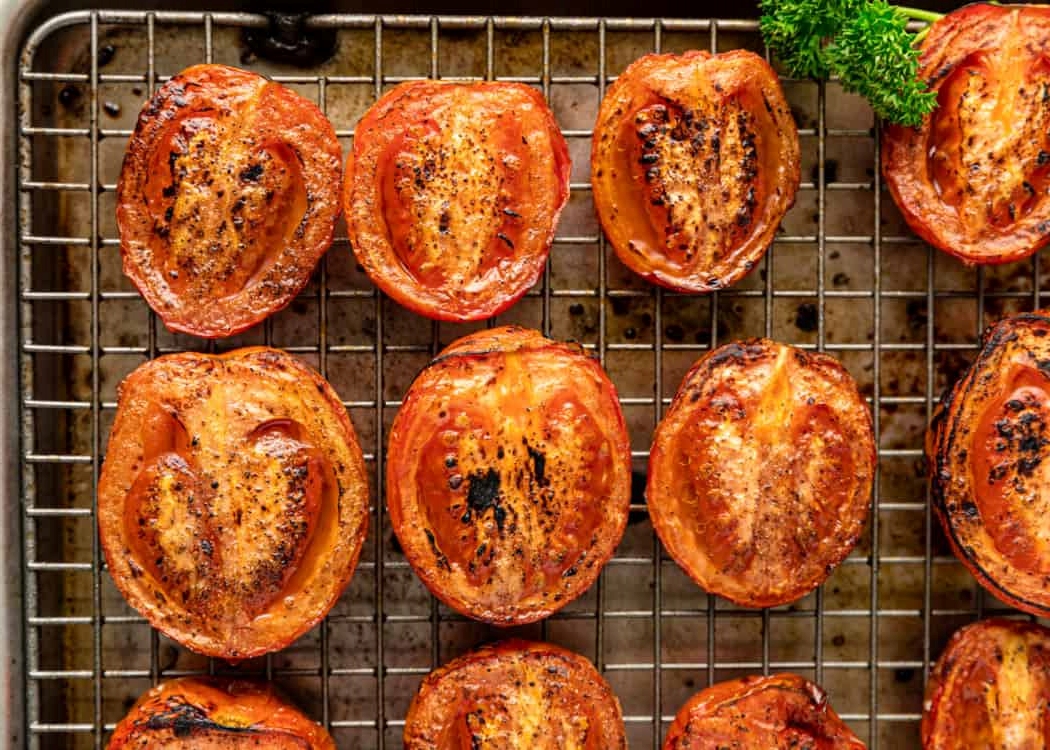
Who doesn’t enjoy the smokey flavor of fire-roasted tomatoes? They’re great in various cuisines, including soups, spaghetti, and pizzas.
Fresh diced tomatoes, canned tomatoes, sun-dried tomatoes, tomato puree, and tomato paste are excellent replacements for Fire Roasted Tomatoes.
Tomatoes are roasted in the oven as a substitute.
Let’s have a look at how these alternatives work. We’ll also recommend some foods to go along with these choices.
No. 1 Tomatoes that are fresh diced
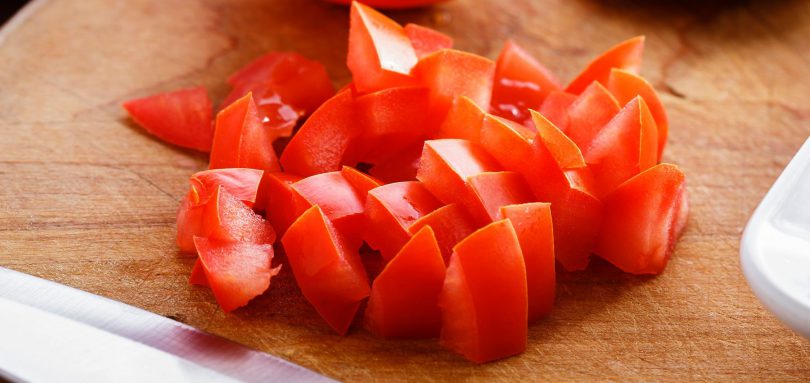
Because it’s uncomplicated and straightforward, this alternative is the ideal substitute. The difference between fire-roasted and diced tomatoes is that fire-roasted tomatoes do not require cooking.
Chop a few fresh tomatoes evenly. It’s just a plain tomato with no distinctive flavor, instead of fire-roasted tomatoes, which have a smoky flavor and aroma. Tomatoes that have been freshly cut have a lighter, more straightforward feel. The tomatoes are also healthier because they aren’t cooked. Most of its nutrients, such as lycopene, will be retained (which is beneficial for fighting cancer). It’s a beautiful idea to have a tomato plant in your house, so you don’t have to go to the grocery shop all the time!
Diced tomatoes are a versatile ingredient that may be used in various dishes. You can add them to any heavy soup as a topping to bring that chunky fresh flavor. Freshly sliced tomatoes are a must-have for any Mexican dish. Imagine our popular pico de gallo and nacho salsa without the addition of fresh tomatoes. One can also add diced tomatoes to salads for a healthy starter meal. Uncooked diced tomatoes maintain their water content, which is the only drawback. They’re only good if you eat them right away or on the same day. If not consumed right away, your dishes may get soggy or watery. Storing sliced tomatoes can also be difficult, especially if done incorrectly.
No. 2 Tomatoes in cans
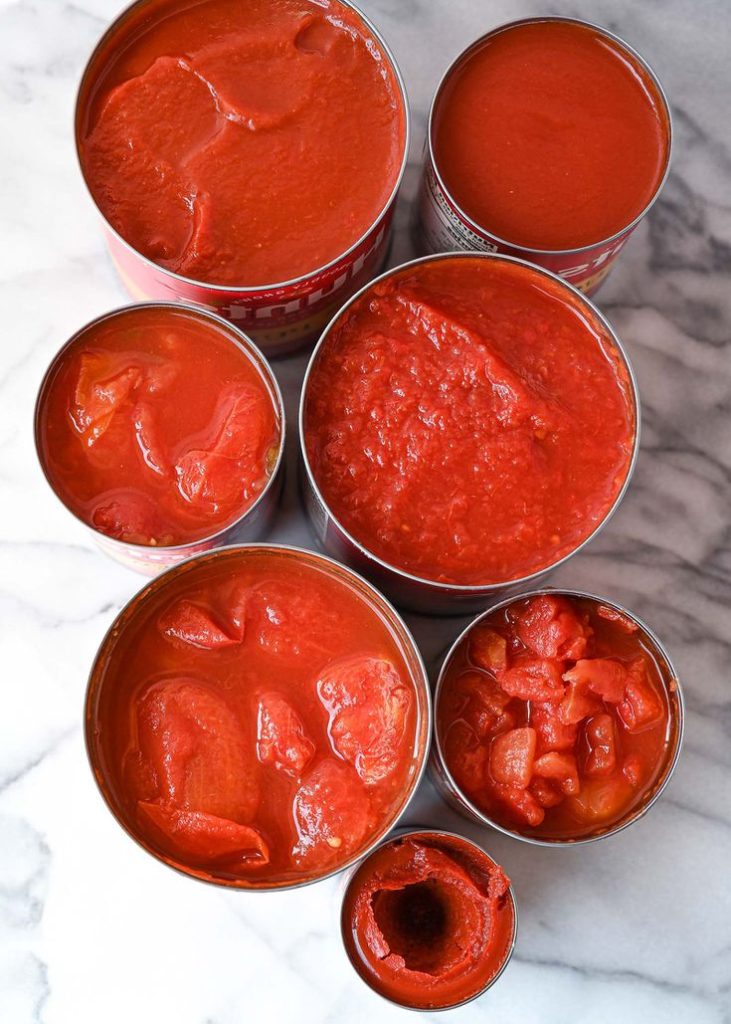
Because we live in the city, we have limited access to farms that provide fresh, organic produce. Other essentials and commodities also increase in price, forcing us to compromise on the quality of food we purchase. As a result, we resort to the low-cost canned goods option. Canned tomatoes are a good solution, and I’m guilty of doing it myself. It isn’t a problem or cause for concern because they aren’t the worst option. And the outcomes aren’t all that dissimilar.
Even though these tomatoes are canned, they retain all of their nutrients. Make sure to choose a reputable brand and read the label carefully. Choose those with a higher lycopene content and other vitamins and minerals. The advantage of canned tomatoes is that they have a very extended shelf life (particularly when compared with fresh tomatoes). You may always store them in your pantry for later use. You’re good as long as they’re not past their expiration date.
One can use tomatoes in cans in a variety of ways. You can use them for simple soups, pizza sauce toppings, and so on — they’re effortless and straightforward to make. There’s no need to slice tomatoes while cooking spaghetti; instead, pour in your tinned tomatoes. You can also use them to make sauces, salsas, and meat marinades. The only disadvantage is that they are not the healthiest option available. However, in an emergency, this option is unquestionably effective.
No. 3 Sun-dried tomatoes
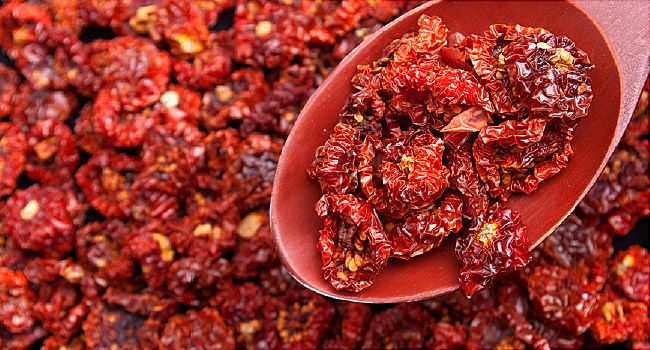
Sun-dried tomatoes are one of my favorite foods. Dried tomatoes are an excellent substitute for fire-roasted tomatoes if you prefer them.
Dried tomatoes are ripe tomatoes that have been dried in the sun as part of a food preservation method. They are marinated in sulfur dioxide or salt to keep their freshness and nutrients. They lose water content during the process, which explains their wrinkled and shrunken appearance. Since ancient times, our forefathers have used this method to preserve meat and vegetables.
The flavor of dried tomatoes is quite similar to that of fire-roasted tomatoes. The texture is salty, flavorful, and crispy. The only difference is that sun-dried tomatoes don’t have a smoky aroma or flavor. They don’t have a burnt flavor to them. They taste like raisins or other sun-dried fruits but with a saltier flavor.
Sun-dried tomatoes keep for a long time because they’ve gone through a food preservation process. They also have a longer shelf life and may be stored for extended periods. Bags that have been opened must be consumed within six months. Bags that haven’t been opened can last for up to 24 months. Sun-dried tomatoes come in a variety of flavors. They can be pounded into a powder and used as topping or seasoning. When added to pasta and pizzas, they provide a particular flavor. For your Italian recipes, you may also prepare your tomato pesto. You can also eat them plain because they have a tangy and salty flavor.
The one thing you can’t do is make smooth sauces with them. The products will most likely be brittle and flaky because they have lost most fluids due to drying.
No. 4 Tomato puree

Tomato puree is a thick sauce or liquid made from fresh tomatoes that have been cooked and strained. Unlike fire-roasted or sun-dried tomatoes, this method includes boiling and mashing until they reach the required thickness. If you don’t have access to an oven and can’t roast your tomatoes, you may always boil them and purée them instead. Pureed tomatoes in a can are also available. However, if you have the time, it is strongly recommended that you create the puree yourself. Homemade, fresh-made pureed tomatoes provide a more incredible flavor.
Tomato puree is also nutrient-dense because it is produced fresh and retains most nutrients. You can also add a little salt and pepper or even chilies for a kick to change the flavor. The flavor is identical to that of conventional tomato sauce from the supermarket. It’s perfect for budget-friendly and nutritious meal prep. For long-term storage, One can freeze tomato puree for up to six months. I usually batch it up into separate containers and label them for easy monitoring.
Like the other replacements, One can use tomato puree in various cuisines. It’s beneficial for creating tomato soups and sauces. It also goes well with spaghetti and pizza. It goes well in beef or chicken stews with carrots and potatoes, which I enjoy. Tomato puree frequently lacks texture because it is liquid. It, however, is not a cause for concern. If you need more texture, you may easily add tomato pieces.
No. 5 Tomato paste
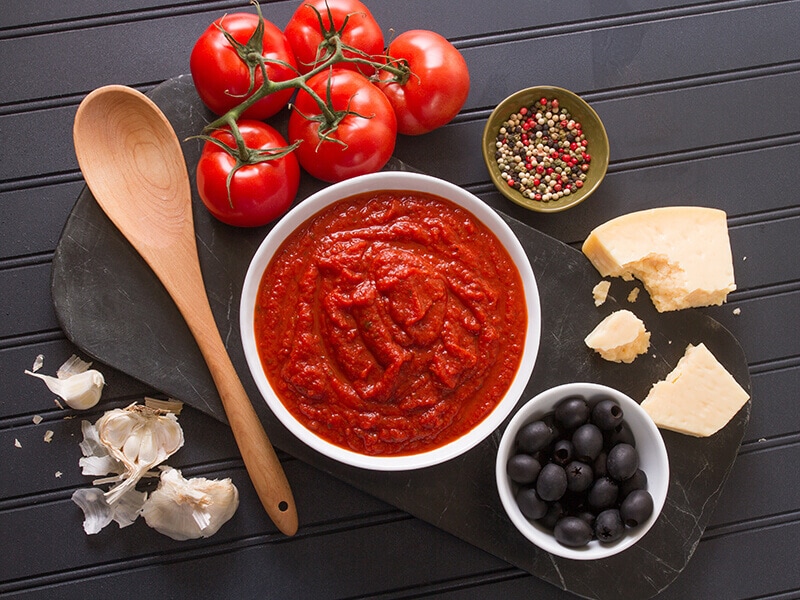
Tomato paste has a thick, concentrated texture that simmers the tomatoes for long periods. It has the appearance of toothpaste but is red. The seeds and skins have been squeezed away to obtain a silky texture. To use tomato paste, either dissolve it in warm water or add it to the cooking pot while it is still hot. Since the water content has been lowered because of cooking for several hours, tomato pastes are not watery or soggy like other tomato sauces. You may need to measure it before adding it to your dish because it is concentrated. The flavor may be too intense for you.
You shouldn’t be able to tell the difference between whether it is done correctly or not. The meal will still have that tomato-ey sweetness and savory flavor. It also gives the meal a splash of color, making it look brighter and more appealing.
You may easily find tomato paste in any supermarket. Like canned tomatoes, they’re relatively common and easy to come by. In comparison to the other alternatives, this is a less expensive option. It’s also relatively simple to save and use. Tomato paste is ideal for stews and meats with a lot of sauce. If I watch my weight, I’ll sauté some vegetables with a bit of tomato paste to give color and flavor. It is also an excellent addition to your “too pale” tomato sauce because it adds that brilliant red hue.
It’s worth noting that tomato paste isn’t the same as tomato sauce in terms of texture. If that’s what you’re looking for, it won’t thicken the sauce. The addition of tomato paste merely enhances the flavor and color of the dish.
Bonus FAQ Tip
How to make homemade fire-roasted tomatoes?
If you can’t live without your favorite fire-roasted tomatoes, here’s a quick recipe you can make at home to get the same smoky flavor.
Ingredients:
- 500 grams of fresh tomatoes
- Olive Oil
- Seasoned salt (optional)
Instructions:
- Clean the tomatoes thoroughly before slicing them lengthwise.
- Preheat the oven to 200°C.
- Place your tomatoes on a baking sheet, drizzle with olive oil, and season with salt to taste.
- Broil for 20 minutes, or until tomatoes are attractively browned.
- For even cooking, rotate the tomatoes halfway through the cooking period.
- Allow them to cool after they have been cooked. Remove the dark charred chunks from the tomatoes and chop them up.
- Use them in any recipe or freeze them for up to 6 months.
ENJOY!











